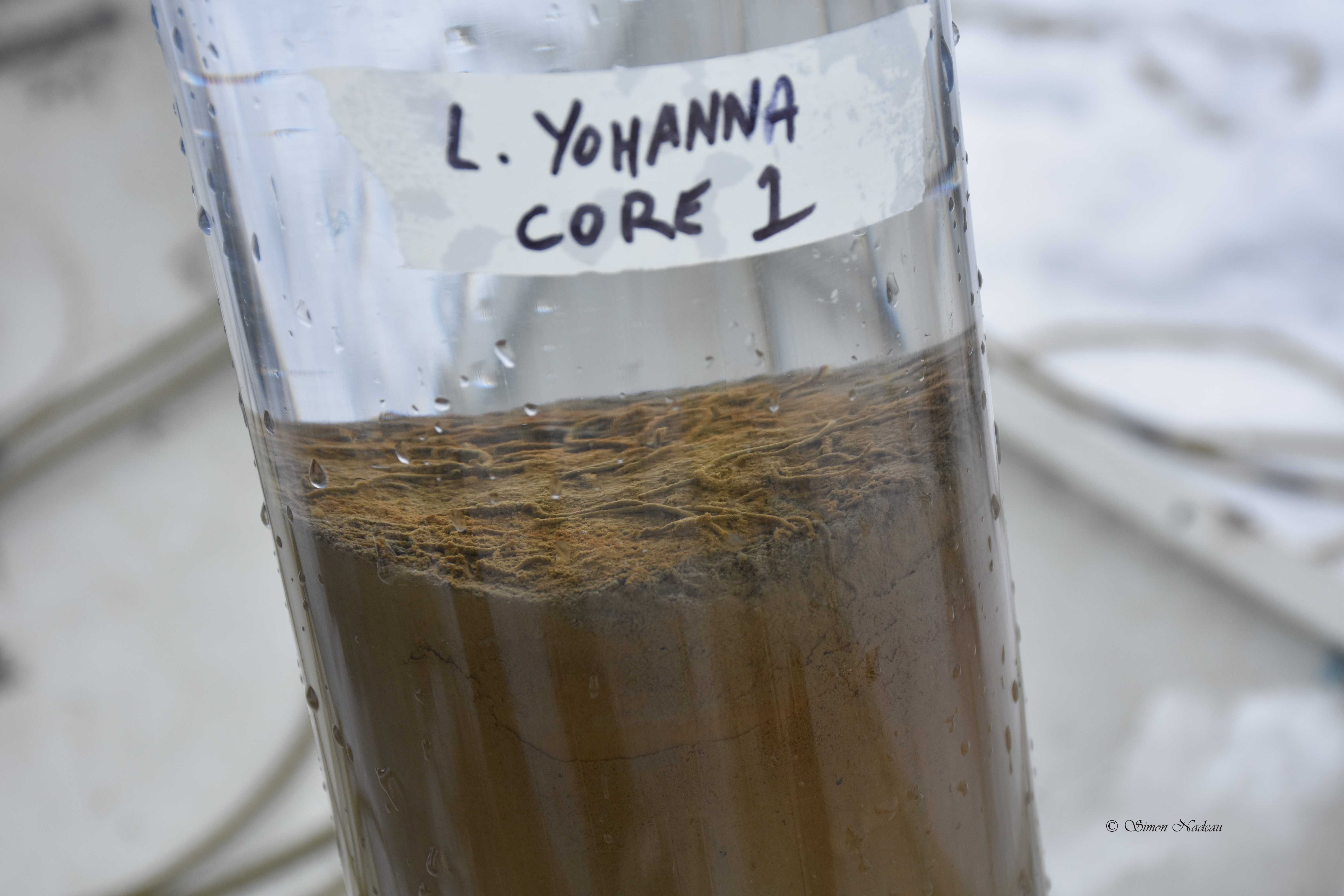Home > Facilities > Facilities
Facilities
Other small boats (Research vessels)
The laboratory also has access to the entire small boat fleet of ISMER.
SMART-CIS high resolution core scanner (Laboratory instruments)
This instrument overlaps pictures of a sediment core taken from a high resolution numeric camera. The file exportation is made in .JPG for display or in .TIF for image analysis.
SmartCIS high resolution core scanenr from SmartCube.
Photograph of the base of core LJC-01 showing (...)
SeaSpy marine magnetometer (Fieldwork and geophysics)
The SeaSpy marine magnetometer is a tow fish measuring the intensity of the magnetic field under the instrument with a high accuracy ( 0,1 nT).
SeaSpy marine magnetometer from Marine Magnetics
Laser granulometer (Laboratory instruments)
The laboratory has also access to a Beckman Coulter LS-13320 laser granulometer. The granulometer uses the laser diffraction to determine the grain sizes. The measured sizes vary between 0.04 to 2000 μm.
Laser granulometer
Particle and Surface Analysis (...)
Klein 5000 v2 side scan sonar (Fieldwork and geophysics)
The laboratory uses a Klein 5000 side scan sonar (455 kHz) for seafloor mapping.
Klein 5000 v2 side scan sonar
X-Rite DTP22 spectrophotometer (Laboratory instruments)
This spectrophotometer can be used to quantify the color of the sediments. The reflectance is measured in the visible spectrum at 10nm interval. In addition the reflectance data can be converted to the following color spaces : HSV, LAB and XYZ.
X-Rite Digital Swatchbook DTP-22 (...)
Trackpoint III positioning system (Fieldwork and geophysics)
The Trackpoint III system of ORE Offshore is used to follow the position of our instruments in real-time during their deployment at sea. An acoustic receiver (USBL) is fixed on the ship in the water and a transmitter (beacon) is fixed on the deployed (...)
Geotek MSCL XCT (Laboratory instruments)
The MSCL XCT from Geotek is a X-ray core imaging system allowing the acquisition of linear X-ray digital images from all types of cores and the 3D reconstruction of the internal structures of the core. Images can be used to identify sedimentary structures and facies before splitting the cores. (...)
MS2WFP Susceptibility/Temperature system from Bartington (Laboratory instruments)
The MS2WFP susceptibility/temperature system from Bartington is used in the investigation of the magnetic mineralogy for the determination of Curie temperatures.
MS2WFP Susceptibility/Temperature system from Bartington
Core opening bench (Laboratory instruments)
With this bench, cores of different diameters and lengths can be cut in halves. Although the tubes are generally made of PVC, it is possible to cut some metallic tubes by changing the cutting blades. From half cores, we can :
- Photograph the sediment with the SmartCIS core scanner
- (...)
10/20 Articles
0 | 10
University of Quebec at RimouskiResearch laboratory in |
Mailing address310 Allée des Ursulines, C.P. 3300 |
Telephone & emailPh: +1 (418) 724-1650 poste 1741 |

